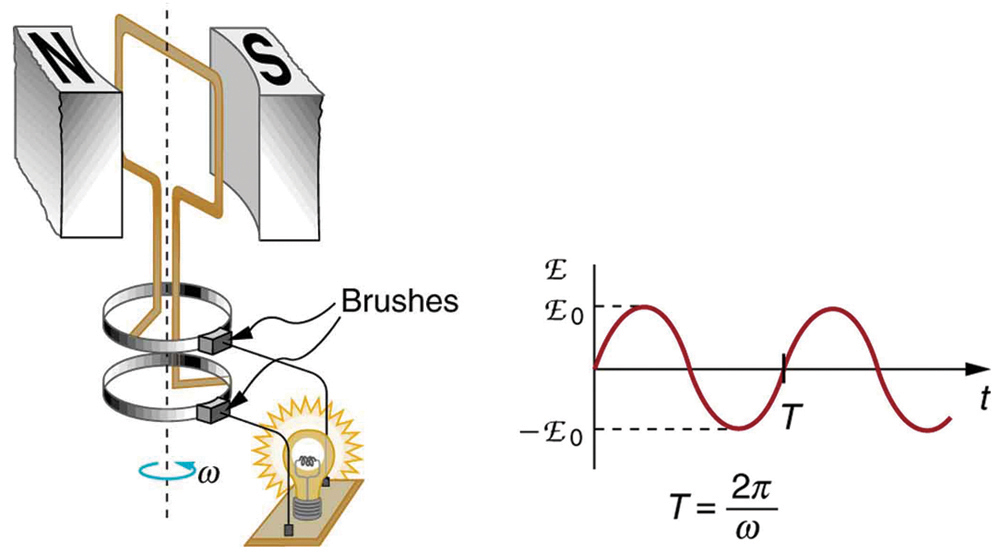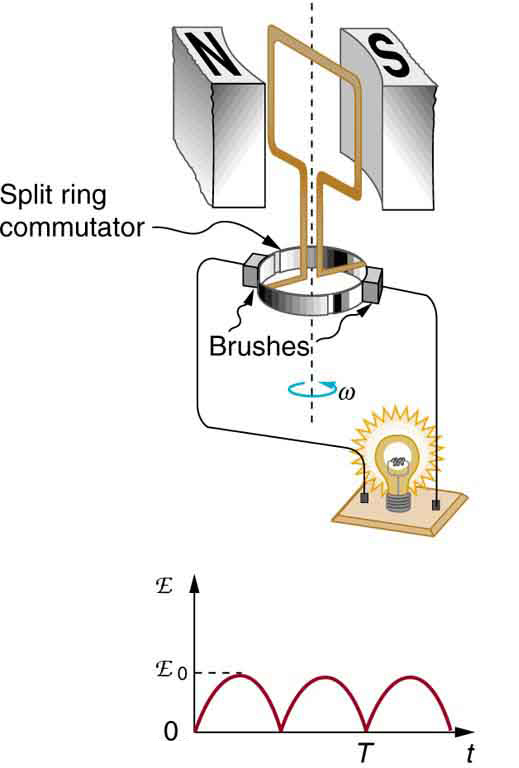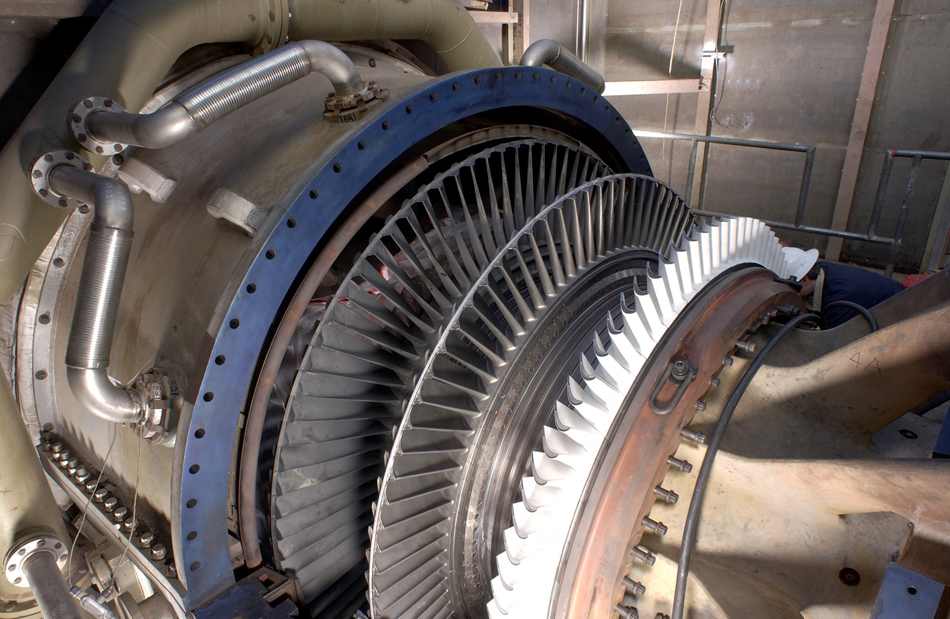| << Chapter < Page | Chapter >> Page > |
Noting that the area of the loop is , and allowing for loops, we find that
is the emf induced in a generator coil of turns and area rotating at a constant angular velocity in a uniform magnetic field . This can also be expressed as
where
is the maximum (peak) emf . Note that the frequency of the oscillation is , and the period is . [link] shows a graph of emf as a function of time, and it now seems reasonable that AC voltage is sinusoidal.

The fact that the peak emf, , makes good sense. The greater the number of coils, the larger their area, and the stronger the field, the greater the output voltage. It is interesting that the faster the generator is spun (greater ), the greater the emf. This is noticeable on bicycle generators—at least the cheaper varieties. One of the authors as a juvenile found it amusing to ride his bicycle fast enough to burn out his lights, until he had to ride home lightless one dark night.
[link] shows a scheme by which a generator can be made to produce pulsed DC. More elaborate arrangements of multiple coils and split rings can produce smoother DC, although electronic rather than mechanical means are usually used to make ripple-free DC.

Calculate the maximum emf, , of the generator that was the subject of [link] .
Strategy
Once , the angular velocity, is determined, can be used to find . All other quantities are known.
Solution
Angular velocity is defined to be the change in angle per unit time:
One-fourth of a revolution is radians, and the time is 0.0150 s; thus,
104.7 rad/s is exactly 1000 rpm. We substitute this value for and the information from the previous example into , yielding
Discussion
The maximum emf is greater than the average emf of 131 V found in the previous example, as it should be.
In real life, electric generators look a lot different than the figures in this section, but the principles are the same. The source of mechanical energy that turns the coil can be falling water (hydropower), steam produced by the burning of fossil fuels, or the kinetic energy of wind. [link] shows a cutaway view of a steam turbine; steam moves over the blades connected to the shaft, which rotates the coil within the generator.

Generators illustrated in this section look very much like the motors illustrated previously. This is not coincidental. In fact, a motor becomes a generator when its shaft rotates. Certain early automobiles used their starter motor as a generator. In Back Emf , we shall further explore the action of a motor as a generator.

Notification Switch
Would you like to follow the 'College physics -- hlca 1104' conversation and receive update notifications?